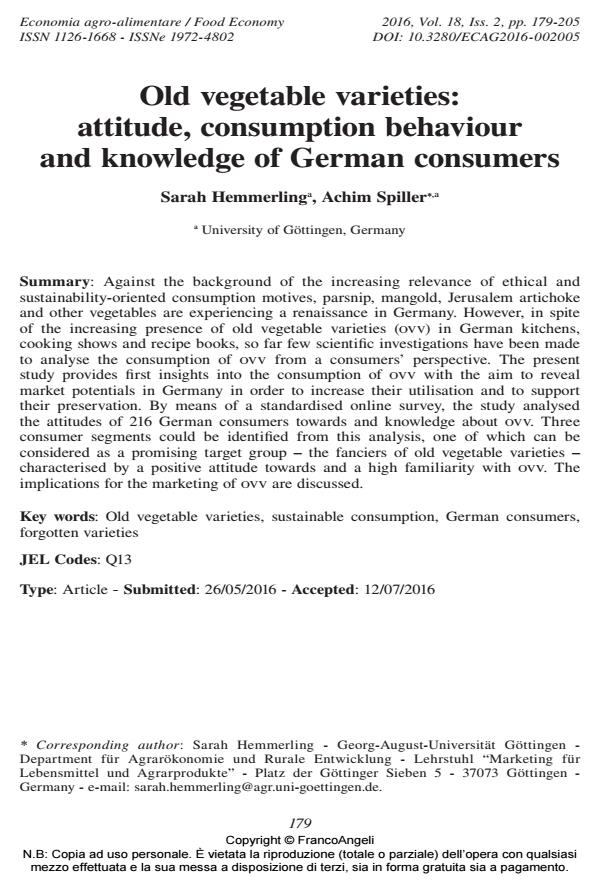Old vegetable varieties: attitude, consumption behaviour and knowledge of German consumers
Journal title ECONOMIA AGRO-ALIMENTARE
Author/s Sarah Hemmerling, Achim Spiller
Publishing Year 2016 Issue 2016/2
Language English Pages 26 P. 179-204 File size 195 KB
DOI 10.3280/ECAG2016-002005
DOI is like a bar code for intellectual property: to have more infomation
click here
Below, you can see the article first page
If you want to buy this article in PDF format, you can do it, following the instructions to buy download credits

FrancoAngeli is member of Publishers International Linking Association, Inc (PILA), a not-for-profit association which run the CrossRef service enabling links to and from online scholarly content.
Against the background of the increasing relevance of ethical and sustainability-oriented consumption motives, parsnip, mangold, Jerusalem artichoke and other vegetables are experiencing a renaissance in Germany. However, in spite of the increasing presence of old vegetable varieties (ovv) in German kitchens, cooking shows and recipe books, so far few scientific investigations have been made to analyse the consumption of ovv from a consumers’ perspective. The present study provides first insights into the consumption of ovv with the aim to reveal market potentials in Germany in order to increase their utilisation and to support their preservation. By means of a standardised online survey, the study analysed the attitudes of 216 German consumers towards and knowledge about ovv. Three consumer segments could be identified from this analysis, one of which can be considered as a promising target group - the fanciers of old vegetable varieties - characterised by a positive attitude towards and a high familiarity with ovv. The implications for the marketing of ovv are discussed.
Keywords: Old vegetable varieties, sustainable consumption, German consumers, forgotten varieties
Jel codes: Q13
- “For More Diversity, Better Taste and My Own Health” Exploring Organic Consumers’ Purchasing Motives for Heirloom Vegetable Varieties Josephine Lauterbach, Christina Bantle, in Sustainability /2022 pp.4068
DOI: 10.3390/su14074068
Sarah Hemmerling, Achim Spiller, Old vegetable varieties: attitude, consumption behaviour and knowledge of German consumers in "ECONOMIA AGRO-ALIMENTARE" 2/2016, pp 179-204, DOI: 10.3280/ECAG2016-002005